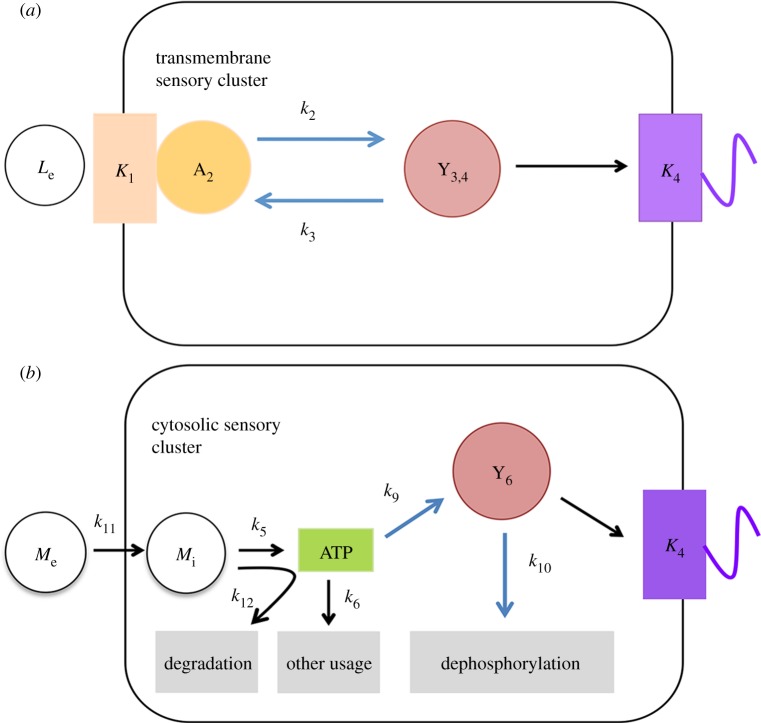Figure 2.
Minimal model for R. sphaeroides (a) transmembrane and (b) cytosolic sensory clusters. Blue arrows indicate phosphotransfer. (a) In the transmembrane chemotaxis pathway model, CheA2 autophosphorylation is increased upon external ligand binding to transmembrane chemoreceptors (activated CheA2 is denoted as A2). Receptor activity is also dependent on ligand-binding constant K1. The amount of CheY3-P and CheY4-P (Y3,4) is dependent on A2, phosphorylation rate k2 and dephosphorylation rate k3. Binding of CheY3-P and CheY4P stops flagellar rotation, influenced by motor dissociation constant K4. (b) In the cytoplasmic chemotaxis pathway model, internal metabolite (Mi) transported from external environment (Me) with rate k11 is taken up and k12 catabolized, producing ATP with rate k5. Subsequently, ATP is used for indirect phosphorylation of CheY6 (CheY6-P denoted as Y6) with rate k9. Other usages of ATP include anabolism with rate k6. CheY6 can also be gradually dephosphorylated with rate k10. Binding of CheY6-P to motor leads to an increased probability of flagellar stopping, depending on motor binding constant K4. (Online version in colour.)

